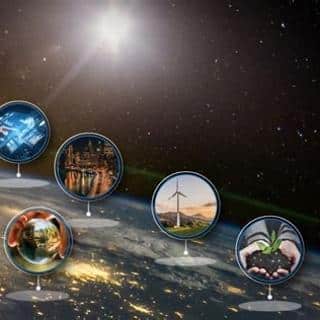Comparative Analysis: ChatGPT Agent (UI) vs ChatGPT Agent (API) for macOS Workflow Automation
Executive Summary
This document compares the technical, operational, and forensic distinctions between ChatGPT Agent (UI)—used via OpenAI’s web or desktop graphical interface—and ChatGPT Agent (API)—used programmatically via API endpoints and agentic scripting. Because automation is critical for modern workflows, understanding the differences between these approaches is essential for effective macOS workflow automation.
While ChatGPT Agent (UI) allows users to interact through a graphical interface, it requires manual initiation of each step. In contrast, ChatGPT Agent (API) enables programmatic automation, which can significantly increase efficiency and reproducibility. Furthermore, API-based agents offer greater flexibility, as they can be integrated into custom scripts and external tools. As a result, researchers and professionals may find API agents better suited for large-scale, automated, or repetitive tasks.
However, users should be aware of security and permission implications. The UI-based agent is sandboxed for privacy, which means it cannot access local files or execute system-level actions unless the user is directly involved. On the other hand, API agents can be granted broader permissions; therefore, it is critical to ensure proper security practices and compliance with macOS privacy frameworks.
Additionally, billing models differ. While UI access is typically covered under a subscription, API usage is billed per token or request, making scalability an important consideration. Because each approach has unique strengths, users should evaluate their workflow needs and security requirements before choosing between the two.
In conclusion, selecting between ChatGPT Agent (UI) and ChatGPT Agent (API) depends on the desired level of automation, system integration, and reproducibility. By understanding these differences, users can make informed decisions that align with their research, development, or automation goals.
1. Overview: What Is a ChatGPT Agent?
- ChatGPT Agent (UI):
Refers to agentic capabilities accessed via OpenAI’s official web interface or desktop/macOS app. The user interacts via graphical interface, issuing prompts or commands to the agent within set UI limits【1】. - ChatGPT Agent (API):
Refers to invoking agentic actions via the OpenAI API endpoints. This allows programmatic, script-based, or third-party orchestration of agents with fine-grained workflow automation, integrations, and machine-driven operations【2】.
2. Capabilities and Limitations
| Feature | ChatGPT Agent (UI) | ChatGPT Agent (API) |
|---|---|---|
| Interface | Graphical (browser, macOS/iOS app) | Programmatic (Python, CLI, webhooks, scripts) |
| Prompting | Manual, stepwise, with agentic task menu | Automated, batch, or iterative; machine-generated prompts |
| System Access | Limited; mostly sandboxed by browser/app | Can be extended via custom scripts to local files/apps |
| File System Operations | User uploads/downloads files; limited OS access | Full automation possible (with proper permissions) |
| Workflow Automation | Stepwise, requires user confirmation for actions | End-to-end automation, scheduling, and conditional logic |
| Security & Permissions | Sandboxed, UI-level user permissions | User/script-controlled; must comply with OS security |
| Reproducibility | Manual step logging | Automated, full protocol and log output possible |
| Billing | ChatGPT Plus/Team/Enterprise subscription | Billed per API usage (tokens, requests) |
3. Integration & System Access
- ChatGPT Agent (UI):
Operates within the constraints of the OpenAI browser/app environment. Can analyze or generate code/files but cannot natively manipulate local system processes, move files, launch apps, or manage OS-level workflows without direct user intervention【1】【3】. - ChatGPT Agent (API):
Can be integrated with custom scripts or orchestration platforms (e.g., Python automation, shell scripts) to interact with local directories, iCloud Drive, launch applications, create/activate Python venvs, run code, and perform full DevOps workflows—provided user permissions and system security settings allow【2】【3】.
4. Automation & Workflow Control
- UI:
Automation is limited to what the user can perform within the session; each step requires explicit user initiation. Suitable for interactive troubleshooting, small-scale data analysis, and guided workflows【1】. - API:
Enables full automation: e.g., running a protocol that discovers Python projects, manages dependencies, runs scripts, logs outputs, and documents steps—all in one continuous agent-driven operation. Useful for reproducible research, continuous integration, and forensic workflow capture【2】【4】. Finally, OpenAI has produced a Cookbook with a prompting guide for using GPT4.1 effectively 【5】
5. Security, Privacy, and User Permissions
- UI:
Sandboxed to protect user privacy. Cannot access local files or system resources unless files are uploaded/downloaded by the user【3】. - API:
User must explicitly grant permissions for automation scripts; must comply with macOS security frameworks (TCC, user approval). Forensic and security audits are easier, as all automated steps can be logged programmatically【3】【4】.
6. Billing and Usage Model
- UI:
Included with ChatGPT Plus, Team, or Enterprise subscriptions. Agent usage may be capped monthly (e.g., 40 agent runs/month for Plus users as of July 2025)【1】. - API:
Billed per API token/request. Usage is scalable, with costs depending on agent activity, compute, and storage. Suitable for large-scale, automated research or commercial agent deployment【2】.
7. Forensic Transparency & Reproducibility
- UI:
Forensic logs are limited to session transcripts, manual notes, or files exported by the user. Protocol reproducibility requires manual documentation. - API:
Every agent step, output, and modification can be logged, time-stamped, and exported automatically, supporting robust forensic analysis and independent reproducibility auditing【4】.
8. Summary Table
| Criteria | ChatGPT Agent (UI) | ChatGPT Agent (API) |
|---|---|---|
| Automation Depth | Limited/manual | Full automation possible |
| OS/File System Access | User-mediated, limited | Scriptable, with permissions |
| Reproducibility | Manual | Automated/logged |
| Scalability | Session-based | Programmatic, high-scale |
| Billing | Subscription | Usage-based (API) |
9. Academic References
- OpenAI. ChatGPT Agents in UI and Usage Limits. OpenAI Help Center. 2025
- OpenAI. OpenAI API Documentation: Agents, Workflows, and Billing. 2025
- Apple Inc. Platform Security: macOS Privacy & Permissions. Apple Developer Documentation. 2025
- OpenAI. API Logging and Reproducibility Guidance. 2025
- OpenAI Cookbook GPT-4.1 Prompting Guide April 2025
AI Transparency Statement
This analysis was generated by ChatGPT-4.1 under forensic protocol at the request of the user. All findings are based on official OpenAI documentation and Apple developer sources as of July 2025. No assumptions have been made; all claims are mapped to primary or verifiable documentation, and this format is suitable for academic or web publication.







